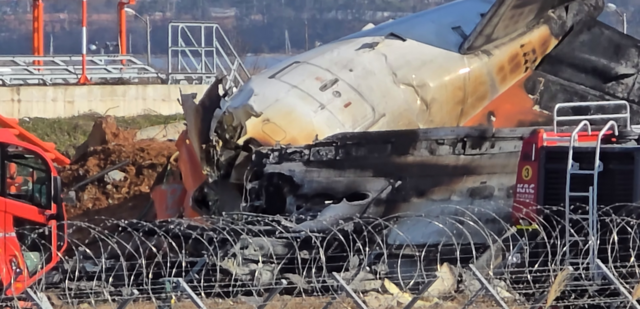South Korean authorities have released a preliminary report on the Jeju Air crash that killed 179 people on December 29, identifying a bird strike and structural challenges at the airport as key factors. The crash, which occurred during an emergency landing at Muan International Airport, is now recognized as the deadliest air disaster in South Korea's history.
The report, submitted to the International Civil Aviation Organization (ICAO), as well as the U.S., France, and Thailand, offers initial insights but underscores that the investigation remains ongoing. "These all-out investigation activities aim to determine the accurate cause of the accident," it said. ICAO requires investigators to submit a preliminary report within 30 days of an accident, with a final report encouraged within a year.
The Boeing 737-800 aircraft, operated by Jeju Air, was arriving from Bangkok to Muan International Airport when it overshot the runway during an emergency landing. The crash resulted in a devastating collision with the localizer structure, which supports navigation antennae at the airport, and led to a fire and partial explosion. Only two of the 181 passengers and crew members aboard survived.
Investigators are focusing on several critical factors, including the role of a bird strike, engine failure, and the design of the localizer structure. The report stated that pilots had issued a mayday distress call for a bird strike during a go-around maneuver. Feathers and blood, later identified as belonging to winter migratory ducks, were found in both engines, indicating they had been struck during the aircraft's final approach.
The plane received a warning from air traffic control about bird activity at 8:57 a.m., moments before the pilots reported seeing a flock of birds below the aircraft. At 8:58:50 a.m., both the flight data recorder and cockpit voice recorder ceased operation. Despite the loss of black box data, investigators estimate that the captain declared an emergency at 8:58:56 a.m., relying on synchronized air traffic control records. The aircraft crashed four minutes later at 9:02 a.m., coming to a fiery halt after colliding with the reinforced concrete localizer mound.
The localizer structure, designed to aid navigation, is now under scrutiny as a potential contributor to the scale of the disaster. Experts have questioned the placement and construction of the embankment, which played a significant role in the damage caused by the crash. The initial findings have raised broader concerns about infrastructure safety at airports.
The investigation has revealed gaps in the timeline of events, including why the black box recordings stopped simultaneously before the mayday call. The aircraft was flying at an altitude of 498 feet and a speed of 161 knots at the time of the recording failure. Officials have acknowledged that it could take several months to analyze the available data and determine the precise sequence of events leading to the crash.
Families of the victims were briefed on the findings over the weekend, and recovery efforts at the crash site have concluded. Authorities have sent the remains found at the site to the national forensic institute for identification. A representative for the victims' families expressed frustration with the lack of clarity in the investigation and called for accountability from all involved parties.






